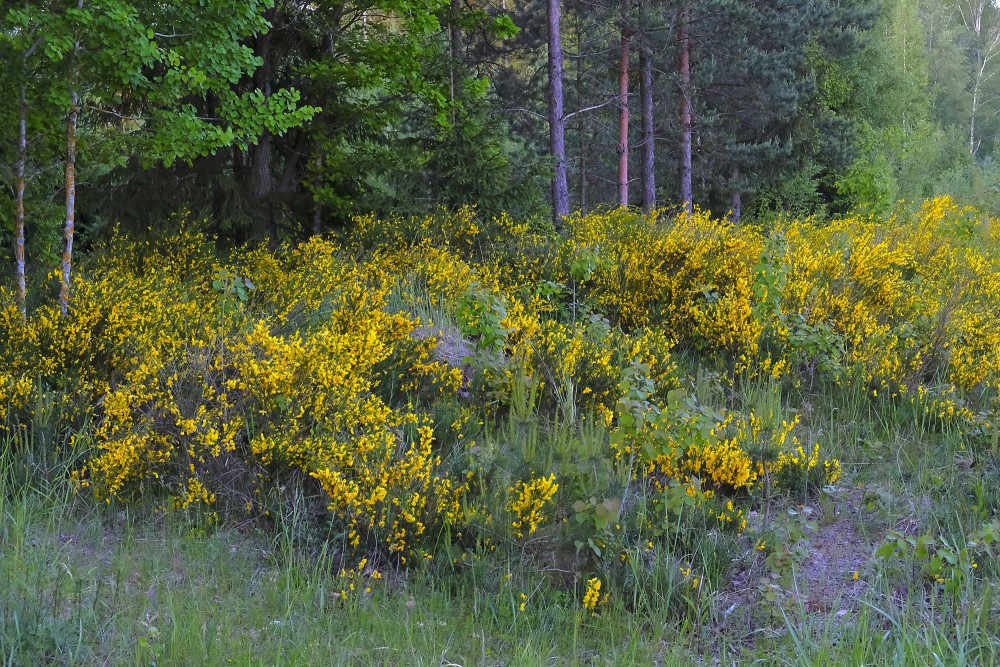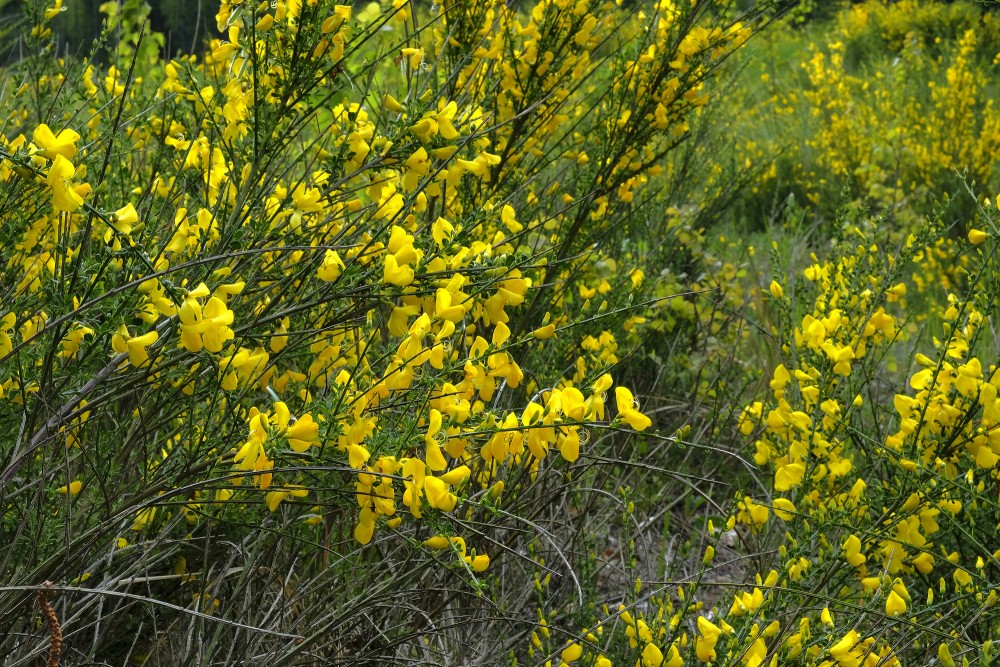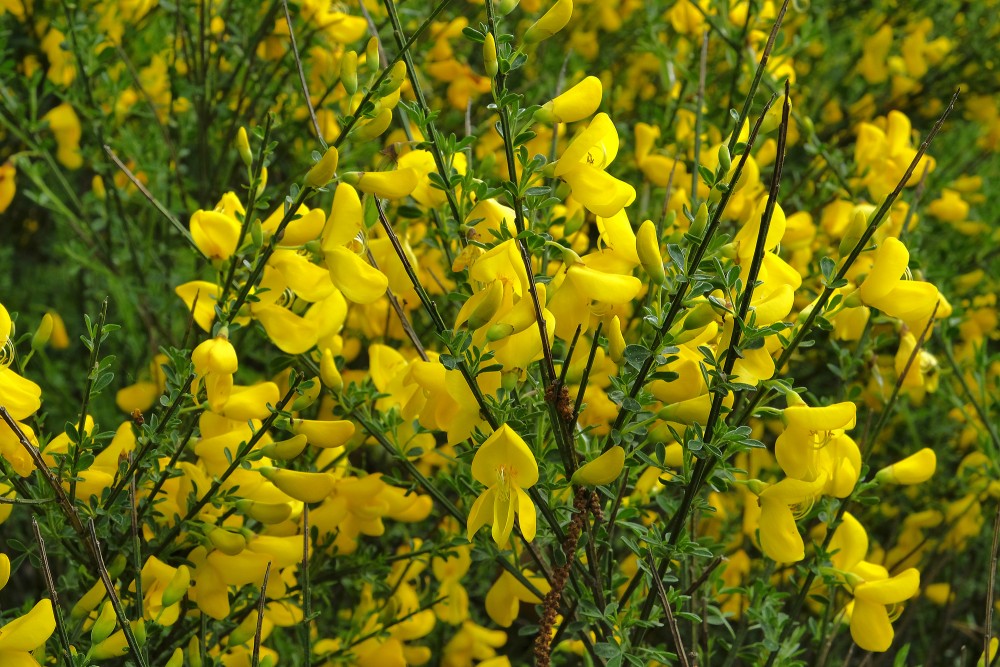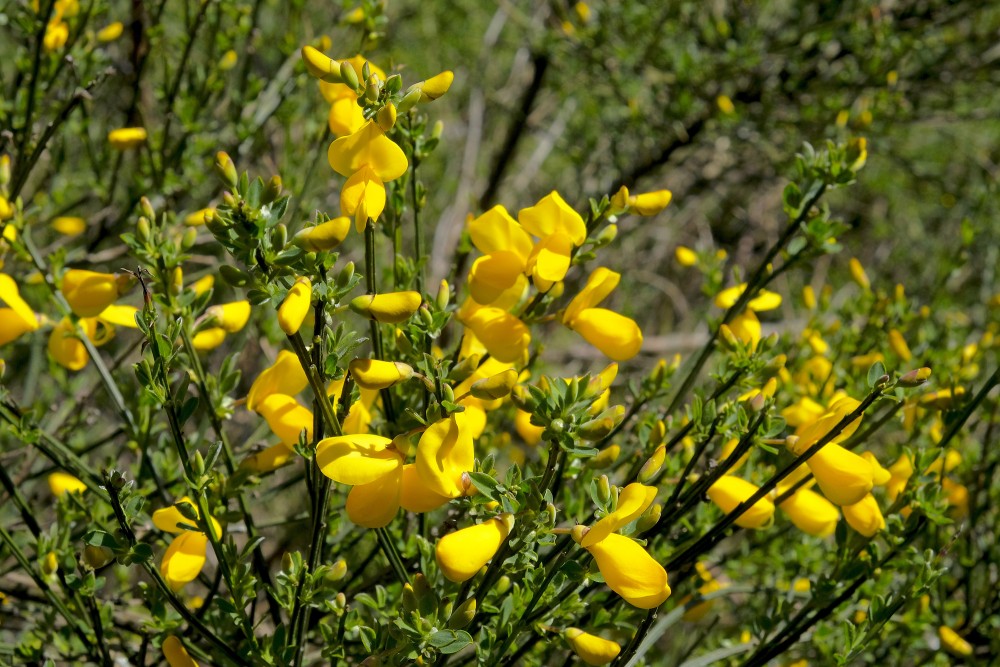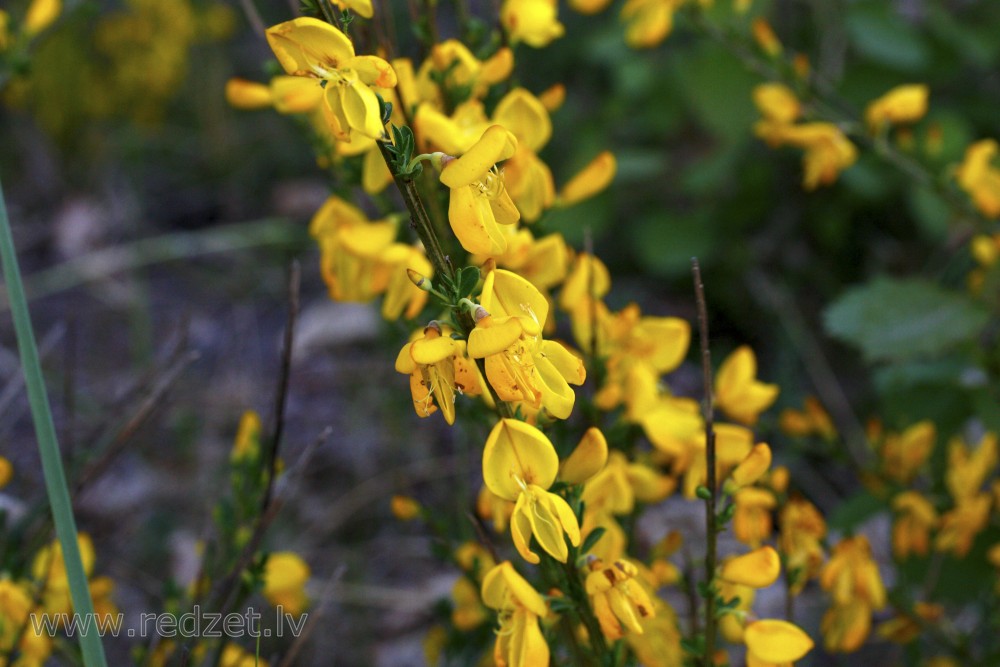Cytisus scoparius (Common broom)
Cytisus scoparius, the common broom or Scotch broom, syn. Sarothamnus scoparius, is a perennial leguminous shrub native to western and central Europe. In Britain and Ireland, the standard name is broom, but this name is also used for other members of the Genisteae tribe, such as French broom or Spanish broom, and the term common broom is sometimes used for clarification. In other English-speaking countries, the most prevalent common name is Scotch broom (or Scot's broom) It is known as English broom in Australia.
Description
Plants of C. scoparius typically grow to 1–3 m (3.3–9.8 ft) tall, rarely to 4 m (13 ft), with main stems up to 5 cm (2.0 in)thick, rarely 10 cm (3.9 in). The shrubs have green shoots with small deciduous trifoliate leaves 5–15 mm long, and in spring and summer are covered in profuse golden yellow flowers 20–30 mm from top to bottom and 15–20 mm wide. Flowering occurs after 50–80 growing degree days. In late summer, its legumes (seed pods) mature black, 2–3 cm long, 8 mm broad and 2–3 mm thick; they burst open, often with an audible crack, forcibly throwing seed from the parent plant. This species is adapted to Mediterranean and coastal climates, and its range is limited by cold winter temperatures. Especially the seeds, seedlings, and young shoots are sensitive to frost, but adult plants are hardier, and branches affected by freezing temperatures regenerate quickly. C. scoparius contains toxic alkaloids that depress the heart and nervous system.
As a legume, this shrub can fix nitrogen in the soil through a symbiotic relationship with Rhizobium bacteria.
Distribution and habitat
C. scoparius is found in sunny sites, usually on dry, sandy soils at low altitudes, tolerating very acidic soil conditions. In some places outside of its native range, such as India, South America, western North America (particularly Vancouver Island), Australia, and New Zealand (where it is a declared weed) it has become an ecologically destructive colonizing invasive species in grassland, shrub and woodland, and other habitats. It is common in Great Britain and Ireland.
Cultivation
Cytisus scoparius is widely cultivated as an ornamental plant, with several cultivars selected for variation in flower colour, including "Moonlight" with deep yellow flowers, "Andreanus" and "Firefly" with dark orange-red flowers, and growth habit, including "Pendula" with pendulous branchlets.
Invasive species
C. scoparius has been introduced into several other continents outside its native range and is classified as a noxious invasive species in California, Oregon, Washington, British Columbia and parts of the east coast of North America, as well as Australia, New Zealand and India. These shrubs commonly grow in disturbed areas and along utility and transportation rights-of-way. The prolific growth of this species after timber harvest inhibits reforestation by competing with seedling trees. It is estimated that it is responsible for US$47 million in lost timber production each year in Oregon. In New Zealand, broom is estimated to cost the forestry industry NZ$90 million, and to cost farmers NZ$10 million.
Biological control for broom has been investigated since the mid-1980s with a number of species being tested. They include the broom twig miner (Leucoptera spartifoliella), the broom seed beetle (Bruchidius villosus), the broom gall mite (Aceria genistae), the sap-sucking broom psyllid (Arytainilla spartiophila), the Scotch broom seed weevil (Exapion fuscirostre) and recently the broom leaf beetle (Gonioctena olivacea) and the broom shoot moth (Agonopterix assimilella).
Eradication
The method used to remove broom is dependent on the prolific seed cycle. Care should be taken to avoid disturbing the ground or the seeding plants between late spring and mid fall. From late fall, through winter, to mid spring are preferred times to eradicate mature plants. There are several methods, cutting, pulling, burning, herbicide or introducing chickens and goats. Drought areas respond well to cutting while the seed pods are young and still green. In cooler wetter areas pulling is the preferred method and hand operated broom pullers are available. Low temperature fires, such as a grass fire, will increase seed germination and new sprouts may form on the burned stumps of mature broom. A spring fire followed by drought conditions will reduce seedling survival. Often new plants will grow from roots or seed, requiring repeated treatments.
en.wikipedia.org

